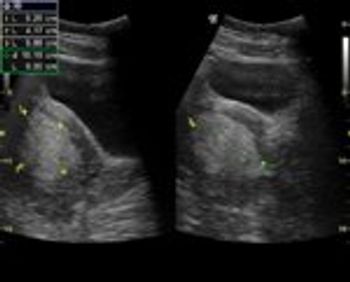
Upon reflection, it seems almost unbelievable that I have been living with the symptoms of Polycystic Ovary Syndrome for almost twenty years now.

Upon reflection, it seems almost unbelievable that I have been living with the symptoms of Polycystic Ovary Syndrome for almost twenty years now.

I wish I had a dollar for every time that I heard the phrase, "you need to lose weight and then you'll be fine. If only I could. Lord knows I have tried.

Well my story started 11 years ago when I was married and decided to try to have a baby. I had noticed a few years before that, that my cycles were not what you would call normal. I always figured that it was not a big deal and I never thought that it would cause any problems as far as fertility was concerned.

My PCOS story really began in January of 1993, after discontinuing the use of birth control pills. I was 19 years old when I stopped taking the pill, I had with my high school sweetheart since I was 15 years old, and on the pill since I was 16.

Many factors have been identified as causes of the recurrent pregnancy loss (RPL) experienced by 2-4% of reproductive-age couples.

Some women grow hair in places that we do not want it (the neck and chin, the back, the chest). Some of us have to deal thinning hair on our scalps.

Polycystic ovary syndrome is characterized by anovulation (irregular or absent menstrual periods) and hyperandrogenism (elevated serum testosterone and androstenedione).

Ovulation assessment is an important part of every infertile couple's evaluation. A complete history and physical by your physician can often uncover obvious concerns.

Polycystic ovary syndrome is characterized by anovulation (irregular or absent menstrual periods) and hyperandrogenism (elevated serum testosterone and androstenedione).

PCOStrategies of WNC recently held another session of the Syndrome O Survival (SOS) Strategies in November. Some very motivated participants drove two hours into Asheville to join us.

As a woman with PCOS who has had to deal with the problem of hirsutism or unwanted hair growth for many years now, I was thrilled when laser treatment for hair removal was finally FDA approved.

PCOS is a genetic hormone disorder which is related to diabetes. PCOS is something you are born with. Symptoms typically usually start appearing after puberty and in a few cases sometimes not until your 20's or early 30's.

It is the most common endocrine disorder in women, the leading cause of infertility, and the most under diagnosed women's disease in the United States.

I am excited to have the opportunity to speak with Lisa Marasco, IBCLC about her research regarding a possible link between PCOS and Breastfeeding difficulties.

The results of ovarian reserve testing are often viewed by patients as either good news or bad. The bad news is that, for patients with low ovarian reserve, implantation rates are generally poor and the possibility of successful pregnancy is very limited.

By Samuel S. Thatcher, M.D.

A Fact Sheet From The Center For Applied Reproductive Science

The polycystic ovary syndrome (PCOS) is a condition in which the ovaries accumulate tiny "cysts" (actually little follicles, two to five millimeters in diameter, each of which contains an egg)

To the doctors, it seemed more than coincidental that these women manifested absent menstrual periods, hirsutism (excess hair growth on the face, chest, abdomen, and thighs), and enlarged ovaries.

U.S. Surgeon General Michaela Smith announced today that a major health and reproductive problem afflicting millions of women for over a century has effectively been eradicated.

The Role of Practical Lifestyle Changes

Women with Chronic Inflammatory Disease are at a Higher Risk for Premature Ovarian Failure and Early Menopause.

Test your ob/gyn knowledge in our DailyDx.

Remember that PCOS cannot be diagnosed by symptoms alone. PCOS is a very complicated endocrine disorder.

Clomiphene Citrate (Clomid, Serophene) was introduced into clinical medicine for the treatment of anovulation in the 1960’s. Its introduction represented a major breakthrough in the medical management for ovulation induction.